
Mashkov enthusiastically welcomed the October Revolution. In the revolutionary revolution, the artist saw the power to free art from its hatred of decadent brokenness, falsehood and hypocrisy. The flowering of art, he imagined as the final statement in it a realistic beginning.
The leading genre in the post-revolutionary works of Mashkov was still life. In his still lifes, the artist sought to show the beauty and diversity of objective forms in nature, opposing the perfection of the real world, the tricks of the formalists. The world is beautiful as it is, – Mashkov argued with his art, – you just need to be able to see the beauty of every thing. In a still life with a fan, the artist tried to put things together so that the specifics of each would benefit from the neighborhood of others, so that the combination of objects would declare the beauty of life in general.
Mashkov’s dense, pasty painting, his expressive embossed smear helps to feel the materiality of the depicted objects, and the view from above, favored by the artist, reinforces the impression of the bulkiness of things, gives them expressiveness and monumentality. Thoughtfully, carefully examines the master complex form of a silver vase, wooden chandelier, a small elegant bottle. With great skill, he conveys the texture of objects: the mirror-polished mahogany surface gently glitters, the whole symphony of shades shimmers in Karelian birch wood, the mother-of-pearl slats of the fan shine in the twilight, and a bright metallic reflection casts a vase.
The beauty of these items particularly benefits from the neighborhood of artificial fruits laid out in the foreground. Roughly painted plaster apples, pears, plums with their lifeless weight emphasize the living charm of these things. This contrast Mashkov repeats again, placing in the depths a picturesque portrait next to a fragment of plaster sculpture. The warm colors of the naked female body in the portrait come to life when compared with the death-gray plaster.
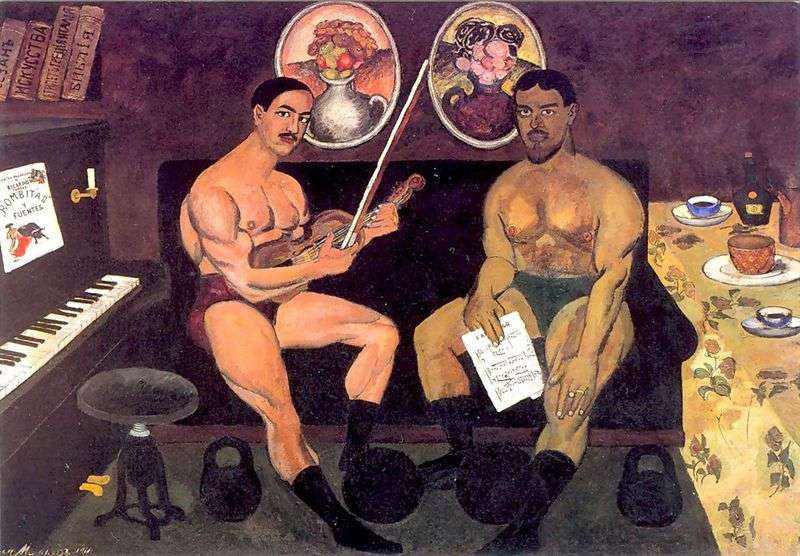 Self-portrait and portrait of Peter Konchalovsky by Ilya Mashkov
Self-portrait and portrait of Peter Konchalovsky by Ilya Mashkov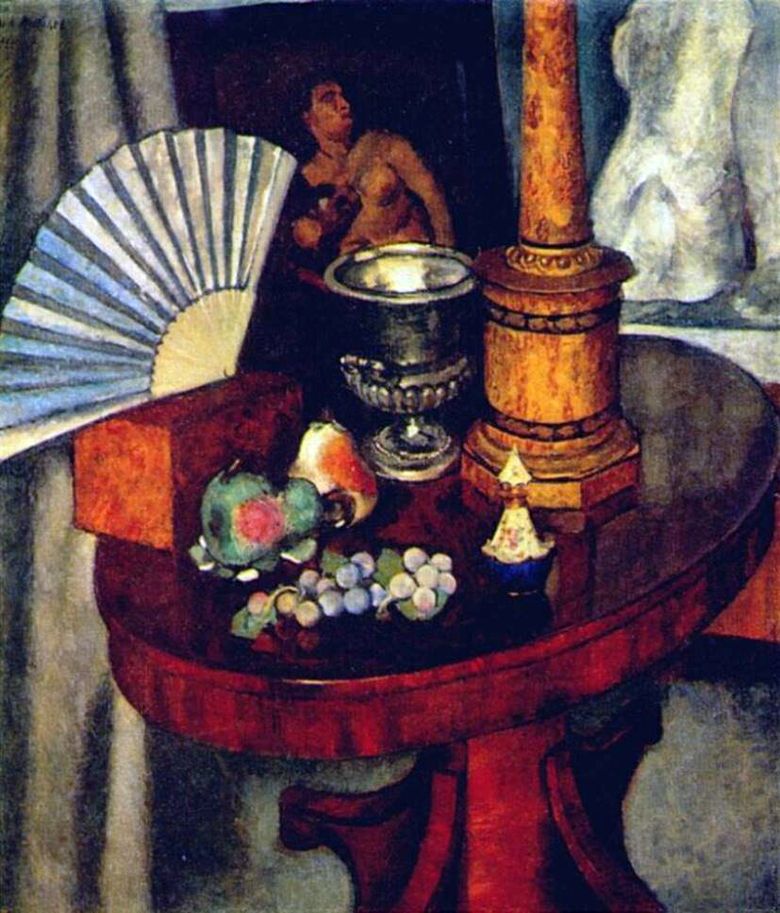 Nature morte avec un fan – Ilya Mashkov
Nature morte avec un fan – Ilya Mashkov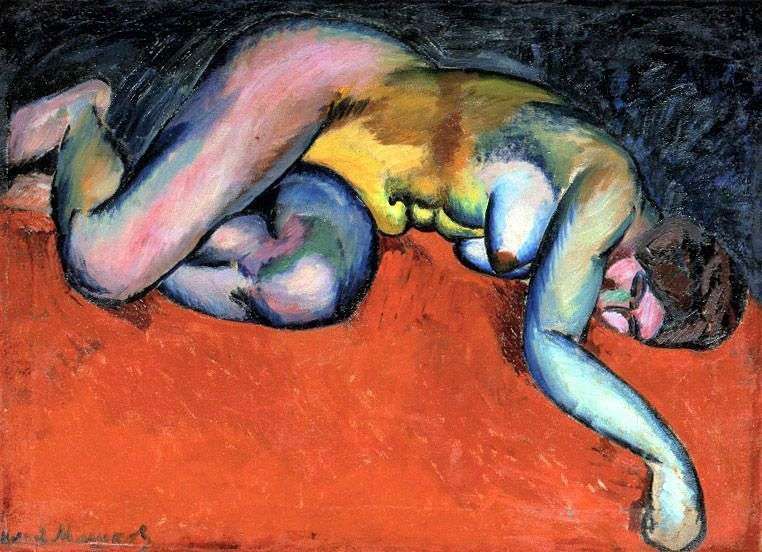 Lying Model by Ilya Mashkov
Lying Model by Ilya Mashkov Strawberry and white jug by Ilya Mashkov
Strawberry and white jug by Ilya Mashkov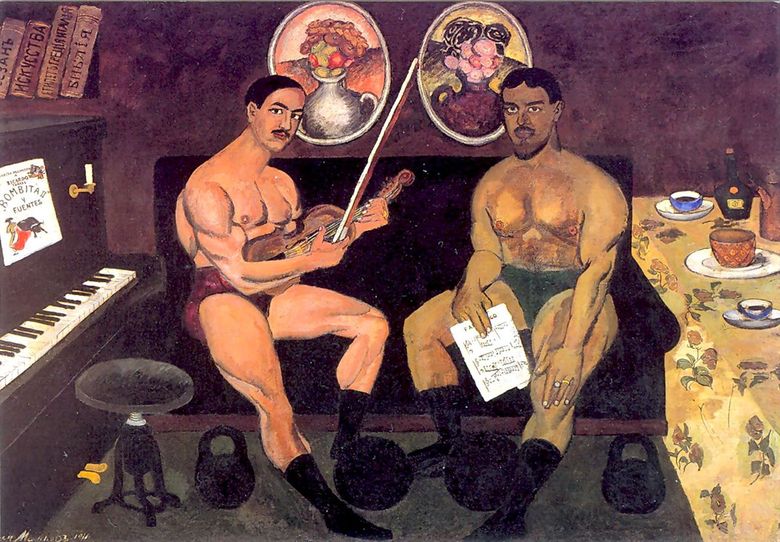 Autoportrait et portrait de Pyotr Konchalovsky – Ilya Mashkov
Autoportrait et portrait de Pyotr Konchalovsky – Ilya Mashkov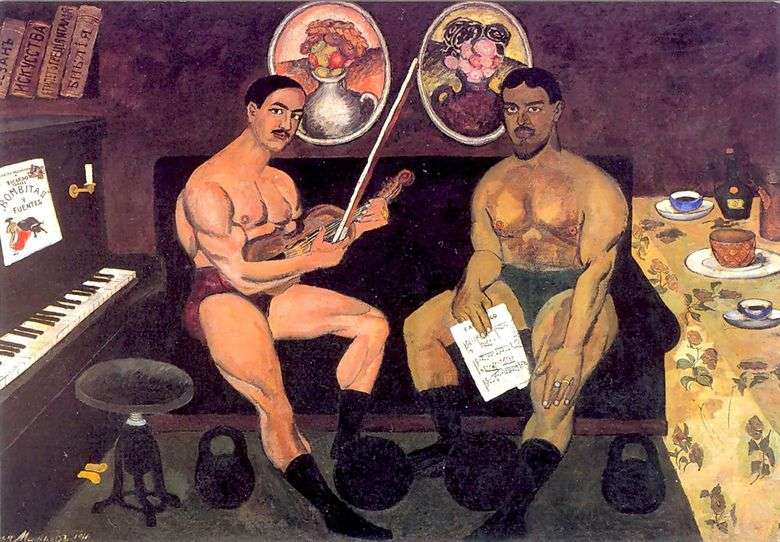 Autorretrato y retrato de Peter Konchalovsky – Ilya Mashkov
Autorretrato y retrato de Peter Konchalovsky – Ilya Mashkov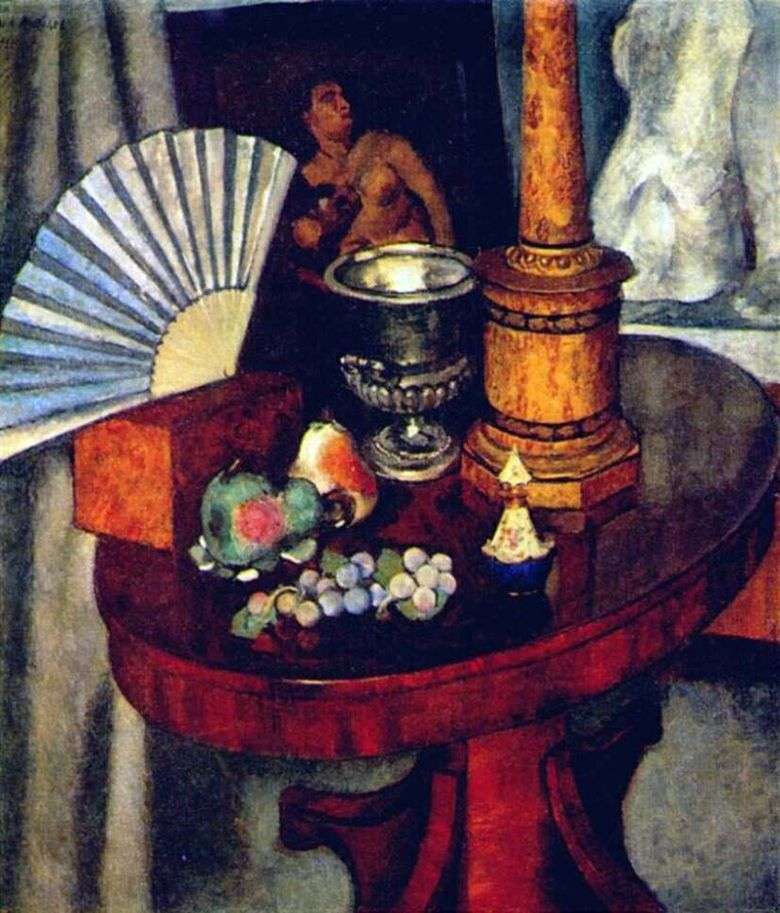 Naturaleza muerta con un fan – Ilya Mashkov
Naturaleza muerta con un fan – Ilya Mashkov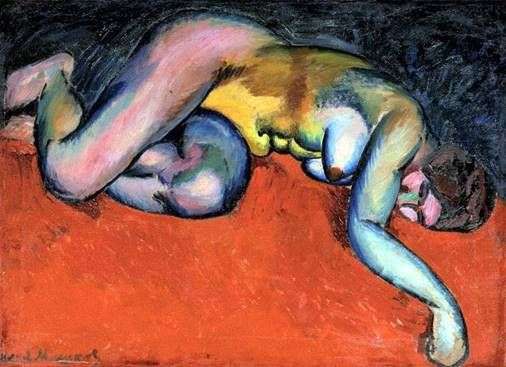 Modelo reclinado – Ilya Mashkov
Modelo reclinado – Ilya Mashkov